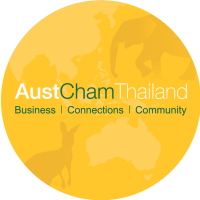By Atakawee Choosang, Associate Director – Head of CBRE Hotels, Thailand
As a hospitality capital of Asia, Thailand has an ever-increasing supply of new hotels competing with the latest chic designs to draw in high-end tourists. But is supply driven demand enough to create a market that will entice high end customers? While the foundational tenets of quality service, comfortable sleep, and design are central components, high end guests require a more tailored approach as their decision criteria are driven more by unique experiences and the value they place on time, rather than the most competitive price. Thus to create an enticing value proposition for the high-end tourist, hospitality and tourism agents need to identify the various types of high-end tourists in order to effectively cater to them, use the correct marketing channels with which to communicate their product, and ultimately provide a top-notch customer experience.
The high-end tourist market is like any other market in that there are different niches of interest and styles. Creating a high-end market means that, collectively, high-end hospitality providers distinguish themselves from each other by selecting a niche segment for which they will cater and target the customers that will want services and experiences of that niche. For example, a business traveler may want a quiet and private hotel where they can both rest and concentrate in an open setting. In contrast, a high net worth jet setting weekender may want a scene with lavish amenities and other guests interested in lively extravagant festivities. What is important is that hospitality and tourism agents cannot provide a one size fits all attitude to all high end tourists, offering a luxury hotel alone; the focus needs to be on the individual experience itself.
Once a niche customer profile is identified, it is essential to understand how to market the experience to customers in that profile through targeted channels. Choosing the right medium for connecting with the customer is important. As an example, traditional marketing through print and television may not be effective on C-Level business professionals unless placed in specific business magazines and television programs. Similarly, as online media overtakes traditional marketing channels, widely used apps, bloggers, and social media influencers are particularly effective in providing a superior means of communicating targeted messages to the high-end leisure segment. High end travelers may prefer this sort of contact, placing a lot of weight on the trusted referrers and interests of their inner circles communicated on user-friendly and preferred platforms such as Instagram, Facebook, or Pinterest (or WeChat and Weibo in the case of the Chinese segment), making it more effective to market to them. These programs and websites are particularly effective at driving emotion through a targeted and often interactive advertisement with their visually captivating ads which may promote word of mouth recommendations that may potentially go viral to the benefit of creating the desired market.
At the core of creating a high-end tourist market is to execute an unparalleled guest stay experience resulting in high online ratings, positive reviews, and promotional postings. As high-end tourists are paying top dollar, the hotel experience needs to impress the customer right from the onset. For example, a well thought through check-in process designed to make the customer feel as though they are in the comfort of a guest lounge rather in a queue at a ticketing booth. New guests should always be given access to their rooms with as little delay as possible and more broadly, guests should never be left feeling unattended upon arrival. Guests that are enjoying a positive stay are more likely to post images of their experience which can in turn drive interest in the hotel in a more genuine and organic way as well. This type of engagement will drive awareness and interest in the hotel and lead to greater numbers of new guests over time.
From a broader perspective, the goal is to make high-end customers aware of your high-end offerings and also to create a collective industry brand that speaks of the country as a whole. Thailand can create a high end tourist market with the help of its “Discover Thainess” tourism campaign. Some ways to create this brand is through programs promoting the inherent aspects of Thai culture and charm, government endorsement and sponsorship in conferences and exhibitions to register high-end tour groups that provide top dollar cultural excursions to non-gateway markets that don’t receive as many foreign inbound customers, making the experience inherently unique.
Ultimately it takes all the players in the industry working in unison to create a high-end tourist market from hotels, to attractions, to services, food, and shopping. That is where public endorsement and sponsorship of a high-end market is crucial in spearheading the development of a high-end tourist market. Government agencies can work with the private sector businesses on campaigns to drive awareness of the high-end market they are trying to create. On an individual level, each high-end hotel or tourist amenity needs to be clear on their unique niche and experience proposition and be sure to implement the experience in a world-class luxury manner.
Making customers’ stays memorable in a positive way will create word of mouth referrals, an extremely valuable and effective method of creating the market for high-end customers.



